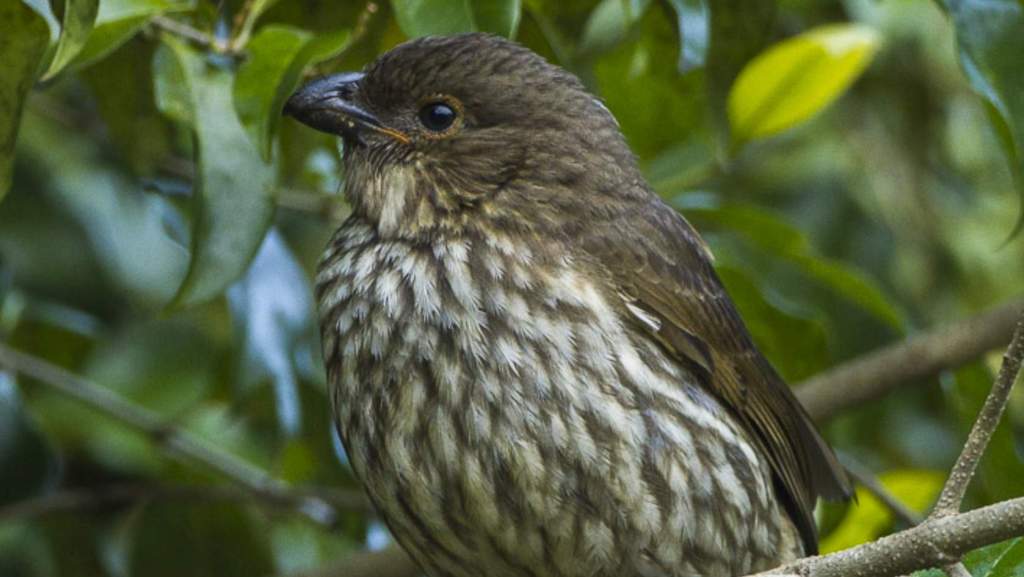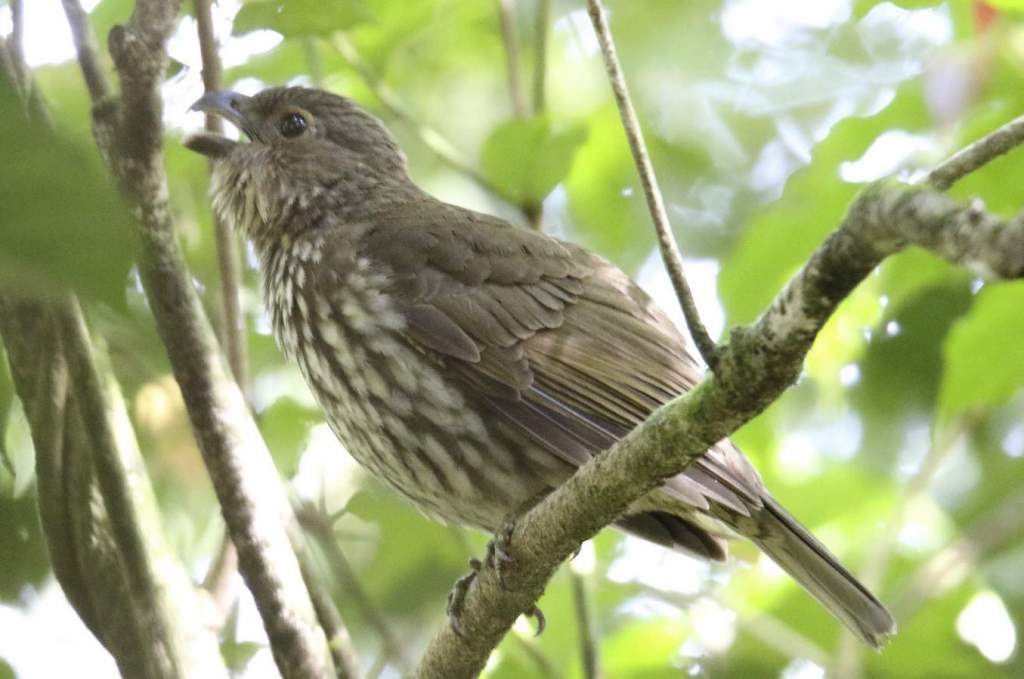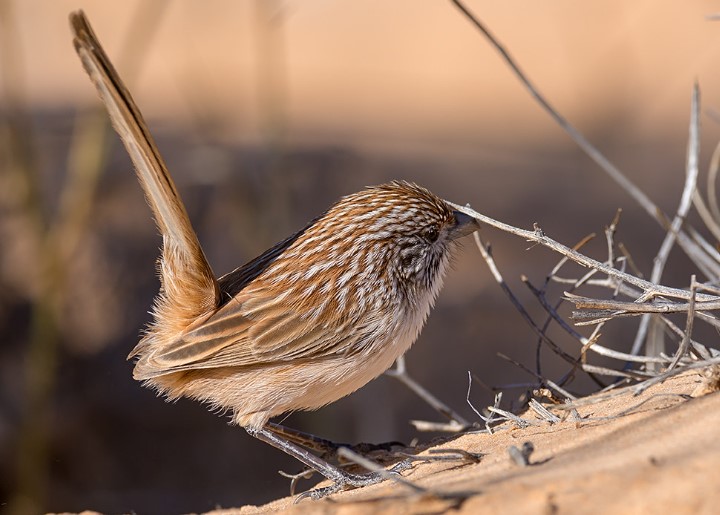Mountain rainforests of northeastern Queensland ring with the brilliant song of male Tooth-billed Catbird (Ailuroedus dentirostris) during spring breeding. It is also known as Tooth-billed Bowerbird, Stage-maker, and Leaf-turner. The size Tooth-billed Catbird is about 260-270 mm.
Tooth-billed Catbird song is an astounding medley of rich limpid twitters and whistles and high-pitched chatters and burrings which seem so varied that some of them may be mistaken for mimicry of other birds. The song stops and starts as neighboring territorial birds sing in turn. Song comes from either the bower or vantage perches from one-half to six meters above it inside the forest where the male spends much of the day in watchful attendance.

As he sings, he throws his head up, bill open, and sometimes bobs from side to side. The bower itself is a flat circular or oval clearing one-three meters in diameter on the forest floor between tree buttresses and under small palms and saplings. It is swept clean of litter by the attendant male which then adorns it with 7-15 large green leaves snipped off the stalk with its double-notched bill. The leaves are specially chosen for their pale grey undersides and are placed upturned on the bower stage so that they glow palely in the gloom.
Rearrangement is constant and as soon as a leaf withers it is replaced by a fresh one. Males gather into loose clans to establish their bower-stages each season. Each bower-the property of one male-is within hearing distance of the nest and all are lined out along ridges, often up to 20 per kilometer. Apart from cleaning the floor and replacing and rearranging the leaves, the male spends little time on the bower stage itself until visited by a female. Then he advances across it in erratic crouching hops.
His breast fluffs into a broad ruff, his wings flick, his tail jerks upwards and his beak gapes, burring and sputtering. Leaves may be picked up and head bobbed as he sings. Males seemingly mate with more than one female, each of which usually rears only one brood each season. When not breeding, Tooth-billed live quietly in the upper forest strata, planning through and over the canopy from tree to tree to feed in ones and twos on a range of fruits, leaves and occasional insects and their larvae. Their notched bills are well-fitted for chewing and strip-cutting leaf blades, major items in their diet.
There is no difference in both sexes. However male bird is slightly larger. Upper parts from head to wings and tail plain deep olive-brown, washed faint russet on flight feathers. Face is streaked brown and buff Underparts dark cream edged thickly brown, appearing streaked; undertail with brown chevrons. Eyes are deep brown. Bill is dusky, with double-notch at tip; mouth orange-yellow. Feet dark olive-grey. The immature bird upper parts are browner than adults; throat and breast paler and mauled.
Nesting and breeding occur in September-January. Nest rather frail, shallow saucer of sticks lined with finer twigs; 190 x 110 mm deep; in thick vegetation among vines, 2-25 meters above ground. Tooth-billed Catbird lays 2 eggs, which are somewhat lustrous cream or buff-cream; oval, about 42 x 29 mm. Incubation duty done by female.
Tooth-billed Catbird call is somewhat harsh, short chuck to maintain contact within the clan, and for identification. However, the song consists of rich, varied whistling and high chirping, long burrs, sputters and chattering, interwoven with liquid notes, varied whisperings and maybe mimicry.
Tooth-billed Catbird is found in Montane rainforests above 500 meters between Cooktown and Paluma Range, northeastern Queensland. The bird is locally nomadic. There is no races.
Read More – Green Catbird (Ailuroedus crassirostris)







